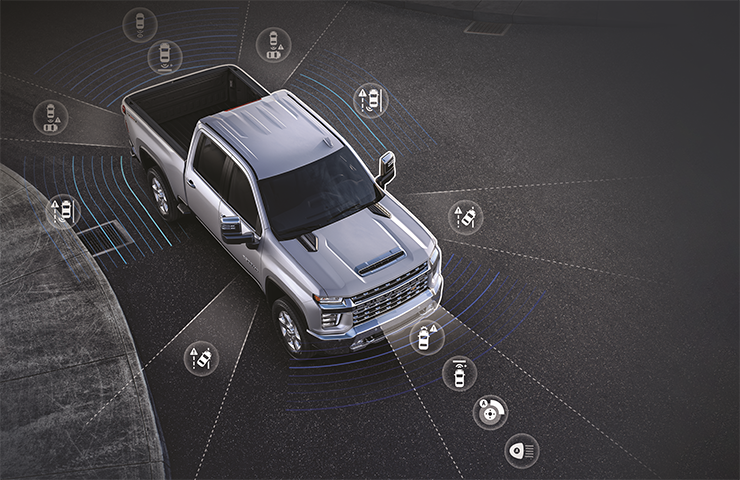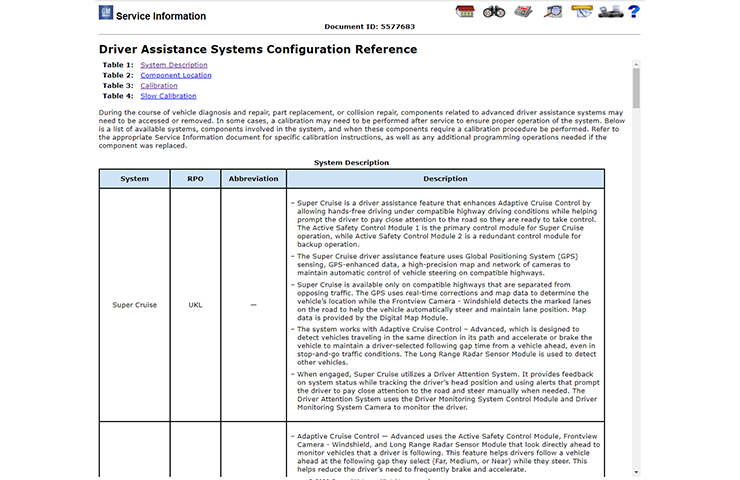From Forward Collision Alert to Reverse Automatic Braking, the advanced driver assistance systems available on current GM models offer features that range from providing alerts and warnings to hands-free driving under compatible conditions. (Fig. 5) During vehicle diagnosis and repair, part replacement, or collision repair, components related to advanced driver assistance systems may need to be accessed or removed. In some cases, a calibration may need to be performed after service to ensure proper operation of the system.
 Fig. 5
Fig. 5
A list of available systems, components involved in the system, and when these components require a calibration procedure be performed is now available in the Service Information (SI). (Fig. 6) Refer to SI document #5577683 for:
- System Descriptions – includes summaries of system operation along with applicable RPOs and common system abbreviations.
- Component Location – detailed information about where to find modules and related system components on the vehicle.
- Calibration Requirements – lists different reasons a calibration is needed and additional information for specific procedures.
- Calibration Programming Tips – actions to follow if a calibration will not complete or is slow to calibrate, including vehicle conditions that may be necessary in order to complete programming.
 Fig. 6
Fig. 6
Refer to the appropriate Service Information for specific calibration instructions for each system, as well as any additional programming operations needed if the component was replaced.
– Thanks to Mike Gastmeier


















